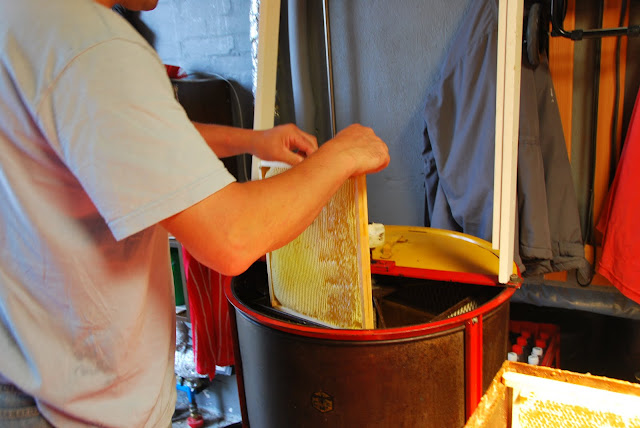Every season the garden has taught us something new. We have been very fortunate to have a fairly pest free experience up until this point. This year we have seen asparagus beetles, eggplant fleas, and some random parasite effected a row of our garlic and is wreaking havoc on some of our celeriac. Both of the latter two, have no real known natural predator! Though we have had our fair share of pests this season, everything overall is healthy and made it past the danger zone for these problem creatures. Everything except our beloved cucumbers.
I blogged last year about how excited we were to be doing tons of old fashioned crock fermenting for all of our pickles; we could hardly keep up with the production! So this year we planted double, so that we could still have a large pickling harvest as well as accommodate our farm bags. Suddenly just as production was getting in it's groove and the baby cucs were growing up, our plants began to die. Upon research, we found that if we had a few cucumber beetles early on, then the plants would have been effected by blight. The result would be that the cucumbers wouldn't mature fully and the plants would die. The above pictured plant is showing the first signs. We're not sure if the four plants we have remaining are strong enough to weather through, or are just going to be the last to give up the fight. We have had plenty of fresh cucumbers for Greek salads and for farm bags, but alas, there will be no pickling this year (at least of the cucs).
We aren't sure if our strangely cool early season, where we saw one warmish week at the beginning of June and then cooled off to spring temps again, is the culprit. Or maybe the way we left the beds insulated with straw when we winterized last season is to blame, but this year we are going to approach our fall garden prep a little differently. We are going to burn all of the straw that we mulched with, compost all of the plant material (as we have done before), and plant more beds to cover crops. Then we will see if we run into the same issues next season. Not only are we ever in tuned with the weather, we inspect our plants constantly as we walk the garden, and are always learning something new. We have now had an education in blight, and though disappointing, we are better for it!
If you want to see some of what is coming soon in our garden click here :)



















